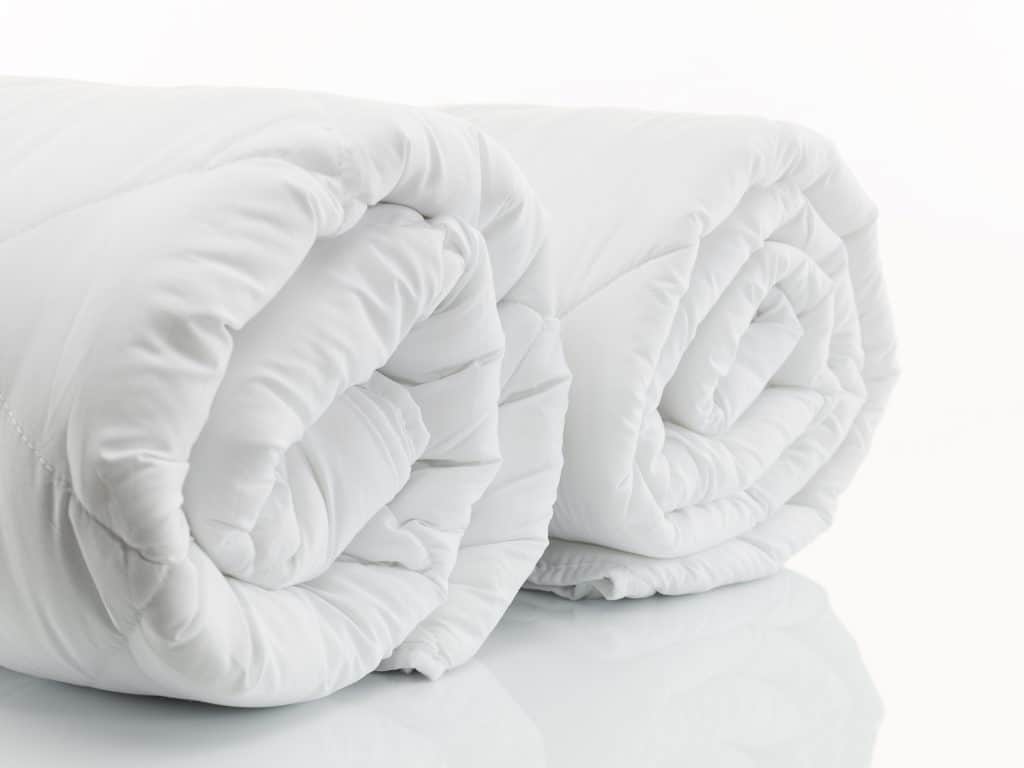Duvets
How to Choose a Duvet
By choosing your duvet carefully, you can sleep soundly and comfortably. It should neither be too hot nor too heavy during the summer nor too cold or too light for the winter. But shopping for duvets can be a bit overwhelming due to the wide array of options. Which is better, a down duvet or a synthetic alternative? Should you choose a baffle box or a channel construction? What is the importance of fill power? Here, we will give you some tips on how to choose the perfect duvet.
What is the Difference Between Duvet, Comforter and Duvet Cover?
Most people often use these three terms interchangeably. But the fact is, there are some differences between them. Generally, a duvet is white or off-white. It can either be filled with down or a down alternative. Duvets can provide warmth and comfort to the sleeper. Sometimes duvets are also known as down comforters.
A comforter is coloured or patterned. It can also be filled with down but most often they are filled with synthetic material.
On the other hand, a duvet cover is used for protecting the duvet. It is much the same as a pillowcase which protects the pillow. Duvets are white while duvet covers are made of different colours and patterns. The three sides of a duvet cover are sewn while the fourth side can be closed using a zipper, buttons or ties so the duvet can be easily inserted or removed. You don’t need to use a duvet cover; however, it can keep your duvet clean. At the same time, it is also used for aesthetic purposes.
How Much is the Ideal Thread Count for Your Duvet?

Commonly, the outer shell of a duvet is made of cotton. Just like your cotton sheets, your duvet also has a thread count. The thread count is the number of threads used in every square inch of fabric. The higher the thread count, the softer the fabric. This means the more comfortable the duvet will be. The ideal thread count of a duvet is at least 300. But it is not necessary to have a thread count higher than this, especially if you will be using a duvet cover.
What are the Different Types of Duvet Fillings?
When it comes to duvet fillings, there are a lot of available options. However, the two main types of duvet fillings are natural and synthetic.
Natural Fillings
The most popular type of natural filling is down. Down is unbeatable when it comes to its superior warmth, lightness and breathability. The fact that ducks and geese manage to keep themselves warm while staying in chilly water only proves that you can have the same warmth on your bed.
When shopping for a down-filled duvet, always check if it contains the words “all down”, “pure down”, or “100% down”. If the duvet is only labelled with “down”, then it might only contain 30% down and the remaining 70% is feathers.

Feathers are not as great as down when it comes to insulating. However, they are much cheaper. Hence, if you want to purchase 100% down, then you’ll have to pay more. Both duck and goose down can offer the sleeper outstanding warmth, but goose down is fluffier.
If you are concerned with allergens, then choose a duvet that is filled with cleaned, sterilised down. This can eliminate most of the potential allergens.
Synthetic Fillings
If you are extremely allergic to feathers, then the best option for you is a duvet with synthetic fill. Synthetic materials include polyester, cotton and wool. Most people choose synthetic-filled duvets because they are hypoallergenic and much cheaper compared to 100% down. But the downside is they are heavier and less breathable than the natural-filled duvets.
What is Fill Power?
You might notice the duvet’s fill power printed on its packaging. But do you know what fill power means? Fill power measures the fluffiness of a down. It refers to the space occupied by an ounce of the down. This means that the higher the fill power of a down, the better its quality and its insulating power. For the summer season, you need a lightweight duvet with a fill power of 400 or below. A duvet with a fill power of 400 to 600 can be used at any time of the year. For cold weather, the ideal fill power is between 600 to 800. However, if you need more warmth, then you need a fill power of 800 or more.
What is the Best Fill Weight?
Fill weight refers to the number of ounces of down inside a duvet. Ultimately, the higher its fill power, the lower its fill weight. This means that a very warm duvet is much lighter than a duvet for warmer conditions. The warmth of a duvet is determined based on its fill weight and fill power. Always remember that your duvet must neither be too hot nor too cold so you can sleep comfortably.
How to Choose the Best Duvet Construction
If the duvet has no construction or extra stitching, then the down inside will easily shift and may create lumps. To keep the down evenly distributed all over the duvet, there must be some kind of construction. There are different types of duvet construction: baffle box, channel, quilt stitching and gusset.
Baffle Box
Duvets with baffle box construction are ultimately the most expensive ones and also the warmest. The small fabric baffles can effectively hold the down in place so the sleeper can enjoy superior loft.
Channel
This type of construction uses parallel seams only, so rather than having a checkerboard pattern on your duvet, you will have multiple channels. This means that the down inside the duvet is likely to shift from one side to another. This is a perfect solution if your bed partner prefers less warmth or if you want more down on your feet.
Quilt Stitching
It has the same appearance as baffle box duvets but it does not have reinforced fabric strips. This type of construction is ideal for duvets with lower fill power. It is also less expensive.
Gusset
Gusset duvets include fabric on the sides, making them look lengthier. They are baffle-stitched and provide more loft.

